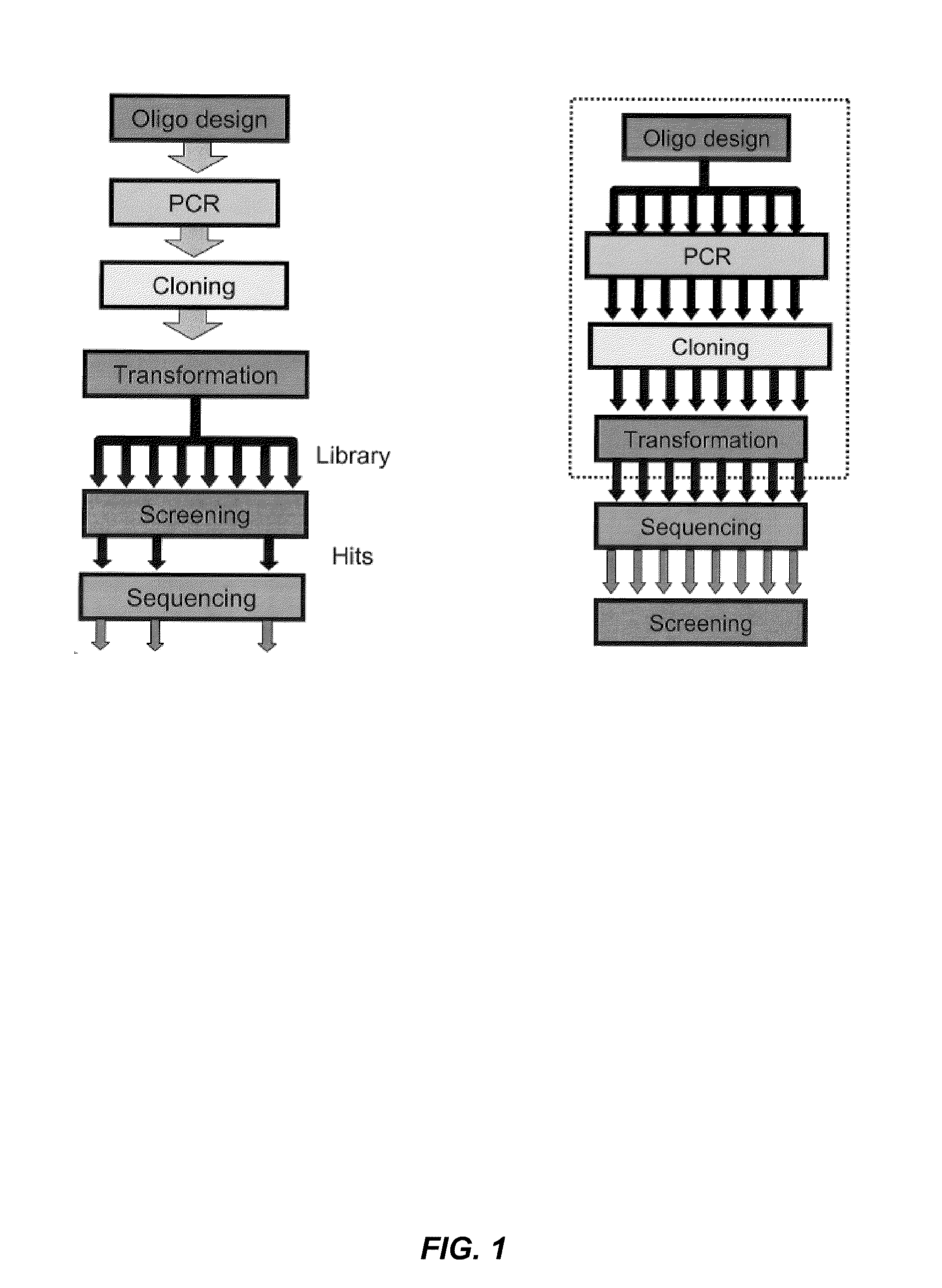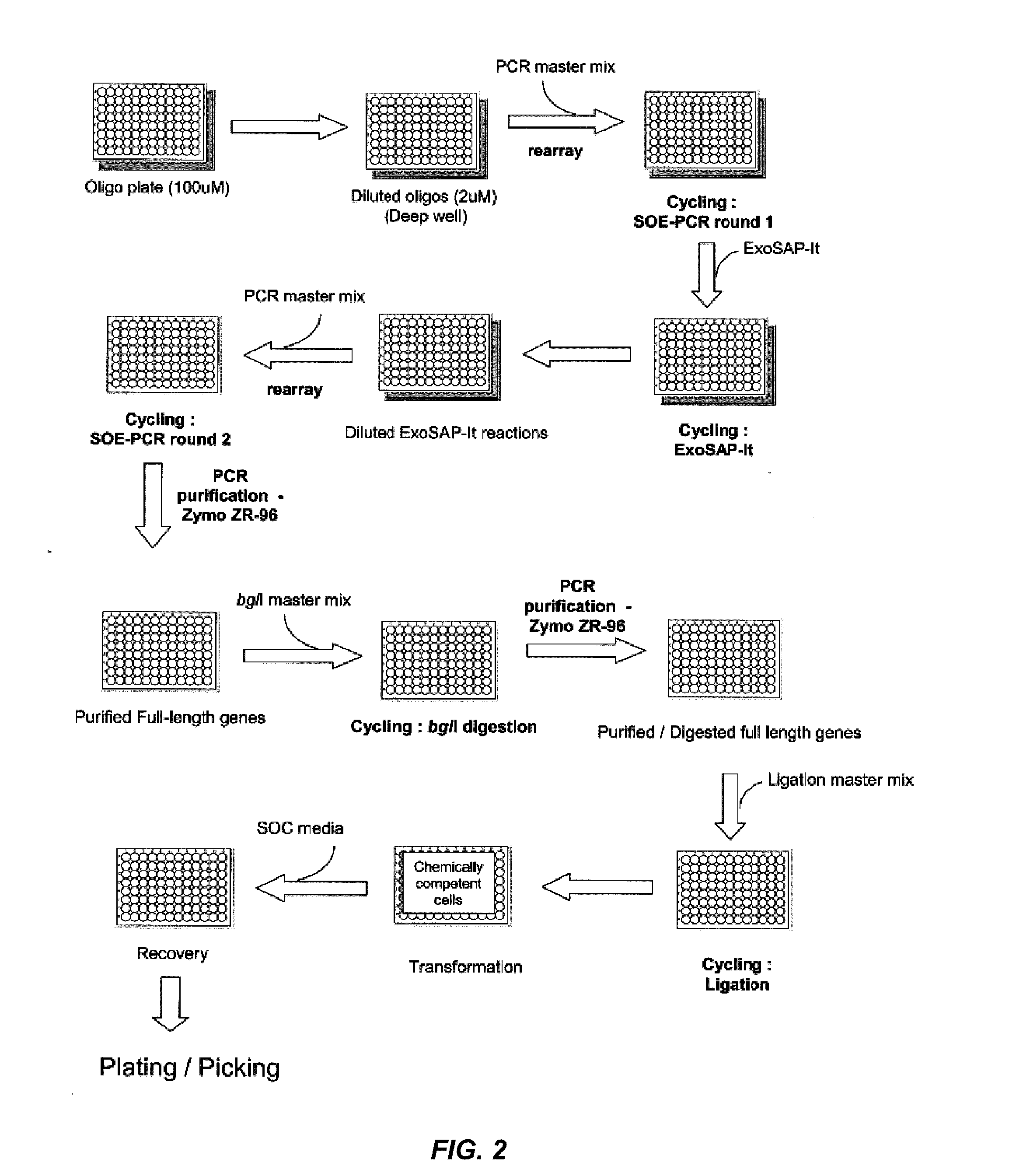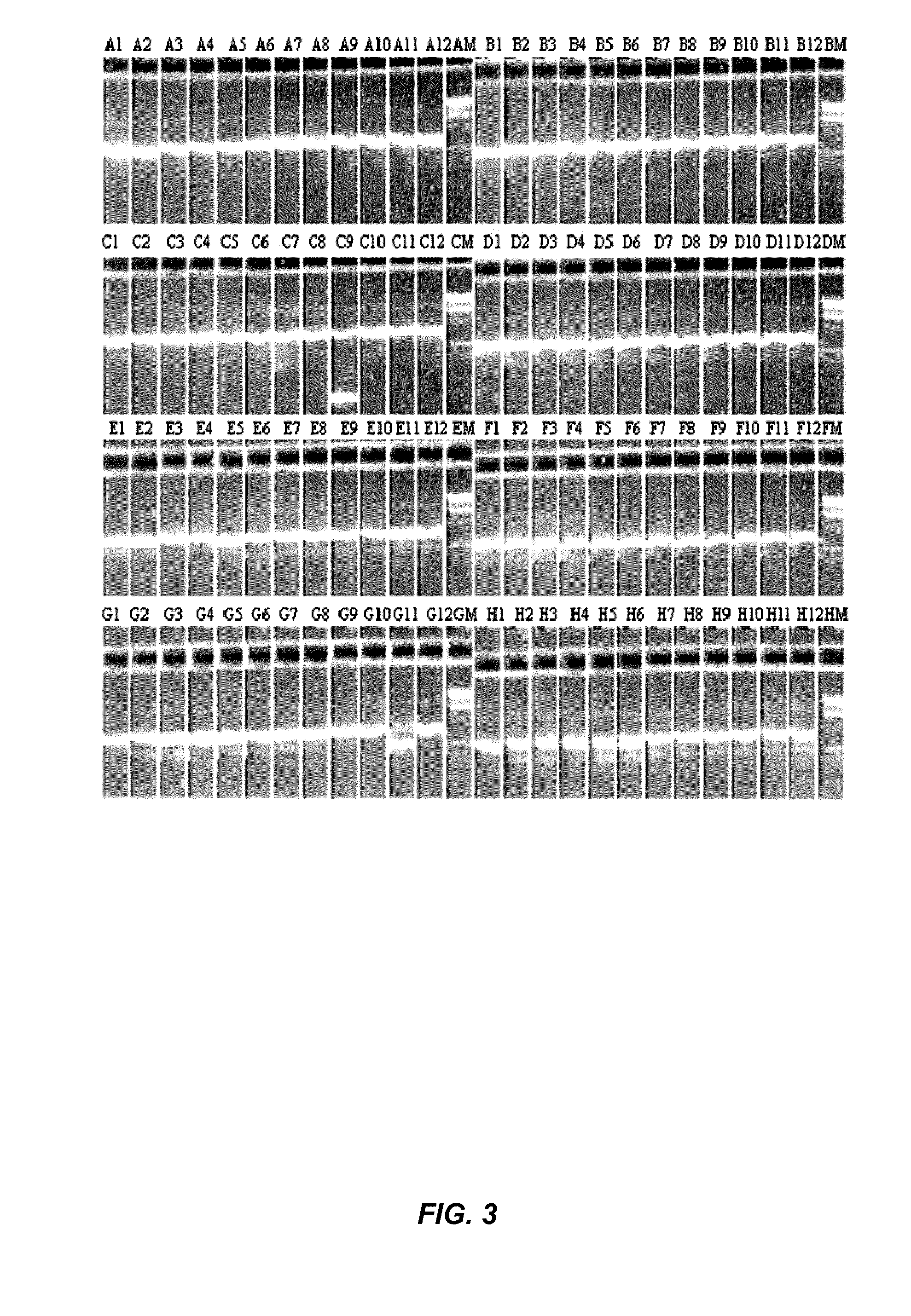Combined automated parallel synthesis of polynucleotide variants
a technology of polynucleotide variants and automated synthesis, which is applied in the direction of nucleotide libraries, library creation, library screening, etc., can solve the problems of low yield of variants having the correct sequence, cost and efficiency of generating mutation combinations, and limit the ability to screen a large number of novel combinations
- Summary
- Abstract
- Description
- Claims
- Application Information
AI Technical Summary
Benefits of technology
Problems solved by technology
Method used
Image
Examples
example 1
Preparation of Amplicons
[0145]Oligonucleotide Preparation. Oligonucleotide primers at 200 uM concentration are diluted to 4 uM with sterile water in an Axygen HalfDeep 96 (1.1 mL) plate. For most positions on the microtiter plate, adding 10 μL of oligonucleotide to 490 μL dH2O will be sufficient. For positions A01 and D01 on the oligonucleotide plate, the common forward and reverse primers, a larger volume may be required. The maximum aspiration volumes in the output report in the aspirate and dispense volumes section is verified prior to the next step. Primers may be pooled in equimolar or non-equimolar ratios after dilution and prior to use for amplicon formation (see e.g., Examples 6-8).
[0146]Round 1—Formation of Amplicons by PCR. Tecan robotics are used to aliquot 5 μL of each forward and reverse oligonucleotide primer into BioRad HardShellPCR96 plates (Tecan script output) and to add 40 μL of master mix. Perform Round 1 PCR and verify amplification using a 2% 96 well e-gel. Rea...
example 2
Assembly of Amplicons and Analysis of Products
[0148]Round 2—Assembly and SOE-PCR. Tecan robotics are used to aliquot a 15 μL pool of fragments (i.e., Round 1 amplicons) into BioRad HardShellPCR96 plates (Tecan script output) and to add 35 μL of master mix (5 μL of 10× Herculase Buffer, 1 μL of 40 mM dNTPs, 0.2 μL of forward primers, 0.2 μL of reverse primers, 2.5 units Herculase enzyme, and 28.1 μL dH2O). Amplicons can be pooled in equimolar or non-equimolar amounts (see e.g., Examples 6-8). PCR is performed and amplification verified using a 2% 96 well E-gel. PCR is carried out as follows: 2 min denaturation at 95° C. following by cycling at 95° C. for 30 s, 56° C. for 30 s, 72° C. for 1 min / Kb. The number of cycles is 17.
[0149]96-well plate purification. Purify all samples using Zymo ZR-96 PCR clean up 96 well plates (manufacturers protocol with the following modifications) (Zymo Research, CA, USA). Perform all centrifuge steps at 2800 rpm for 10 minutes. To elute the DNA, apply 2...
example 3
Generation of a Set of 190 Different Polynucleotide Variants Each Encoding a Polypeptide Having a Single Amino Acid Change Relative to a Reference Polypeptide
[0158]Experimental design: A reference polynucleotide of 1359 by (encoding an enzyme of 453 amino acids) was selected. A total of 190 amino acid residue differences from the reference sequence were selected based upon sequence changes seen in homologous enzymes. The 190 variants were made as individual polynucleotides encoding the 190 different proteins to be expressed and tested. Each of the 190 polynucleotide variants was assembled by combining two amplicons comprising the desired single codon change in their overlap region (as prepared in Round 1 below) in a SOE reaction (Round 2 below).
[0159]Oligonucleotide preparation: A total of 382 oligonucleotide primers for PCR were designed and synthesized according to standard methods. Oligonucleotides were generally 31 nucleotides (nt) in length with the desired change(s) to the cod...
PUM
| Property | Measurement | Unit |
|---|---|---|
| volume | aaaaa | aaaaa |
| temperature | aaaaa | aaaaa |
| volume | aaaaa | aaaaa |
Abstract
Description
Claims
Application Information
 Login to View More
Login to View More - R&D
- Intellectual Property
- Life Sciences
- Materials
- Tech Scout
- Unparalleled Data Quality
- Higher Quality Content
- 60% Fewer Hallucinations
Browse by: Latest US Patents, China's latest patents, Technical Efficacy Thesaurus, Application Domain, Technology Topic, Popular Technical Reports.
© 2025 PatSnap. All rights reserved.Legal|Privacy policy|Modern Slavery Act Transparency Statement|Sitemap|About US| Contact US: help@patsnap.com



